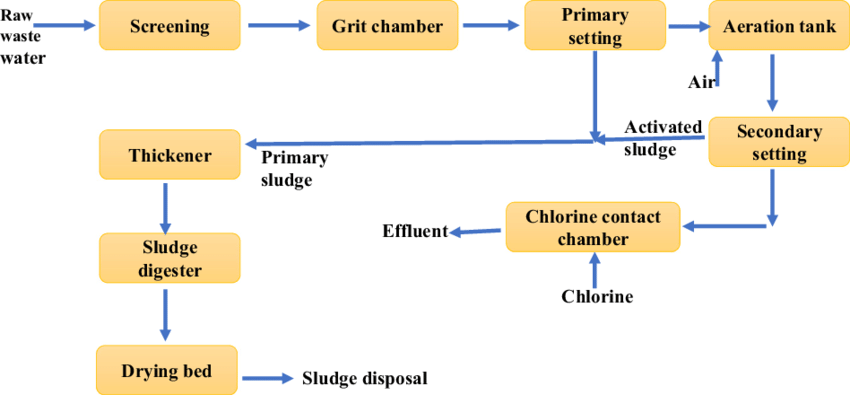The 30-Second Trick For Reclaim Waste
The 30-Second Trick For Reclaim Waste
Blog Article
Some Known Incorrect Statements About Reclaim Waste
Table of Contents8 Easy Facts About Reclaim Waste DescribedReclaim Waste Can Be Fun For AnyoneThe Single Strategy To Use For Reclaim WasteThe Reclaim Waste PDFsMore About Reclaim Waste
Check out the kinds, occurrences, and kinds of fluid waste. Domestic sewage waste refers to the waste and items from a household septic tank. This kind of waste is produced by humans in houses, institutions, and other buildings. This only includes septic systems that have a drainpipe area. The proper monitoring and disposal of residential sewer waste need liquid waste to be moved to a sewage therapy plant where the proper methods and devices are applied to cleanse and throw away waste.
Business waste typically consists of prospective hazards, such as flammable products or a mixture of liquid and strong waste items, and requires an advanced and detailed disposal process. The disposal of business waste generally involves the filtering of waste prior to transport to ensure risk-free and correct disposal. Hazardous waste is created from by-products and overflow of commercial processes and production.
This type of waste can not make use of the very same sewage management transportation or processes as septic or business fluids. The industrial waste monitoring procedure needs the evaluation and screening of fluid waste before it goes through the disposal procedure (liquid waste disposal). Overflow waste is the fluid waste that comes from runoff and excess stormwater in highly populated areas or cities
Runoff waste can cause contamination and flooding if not taken care of effectively. Ensuring correct waste administration can avoid disasters and lower ecological injury.
Little Known Facts About Reclaim Waste.
Get in touch with PROS Services today to learn more about our waste monitoring and disposal services and the correct methods to care for the fluid waste you produce.
(https://profile.hatena.ne.jp/reclaimwaste1/)This supposed 'wastewater' is not only a vital source however, after treatment, will certainly be launched to our land, waterways or the sea. Used water from bathrooms, showers, baths, kitchen area sinks, washings and commercial procedures is understood as wastewater.

water used to cool down equipment or clean plant and tools). Stormwater, a form of wastewater, is overflow that flows from farming and urban areas such as roofing systems, parks, yards, roads, paths and seamless gutters into stormwater drains pipes, after rainfall. Stormwater streams neglected straight to local creeks or rivers, ultimately getting to the ocean.
How Reclaim Waste can Save You Time, Stress, and Money.
In Queensland, the majority of wastewater is treated at sewage treatment plants. Wastewater is transported from domestic or industrial sites through a system of sewage systems and pump terminals, called sewage reticulation, to a sewer therapy plant. Neighborhood governments build, maintain and operate most sewer treatment plants. Operators are certified under the Environmental Defense Act 1994 to discharge treated wastewater at an appropriate ecological standard right into rivers.
The Department of Natural Resources suggests city governments regarding handling, operating and keeping sewage systems and treatment plants. In unsewered areas, regional governments may call for householders to mount private or home sewage therapy systems to deal with domestic wastewater from toilets, kitchens, restrooms and washings. The Department of Natural Resources authorises using home systems when they are shown to be effective.
In some new communities, treatment of some stormwater to eliminate clutter, sand and gravel has begun utilizing gross pollutant catches. Wastewater therapy occurs in four stages: Removes strong issue.
Wastewater then moves into big storage tanks where solids work out and are gotten rid of as sludge. Grease and scum are skimmed from the surface area. Uses small living microorganisms referred to as micro-organisms to break down and eliminate remaining liquified wastes and fine bits. Micro-organisms and wastes are incorporated in the sludge. Eliminates nitrogen and phosphorus nutrients that might cause algal blooms in our waterways and threaten water life.
More About Reclaim Waste
Nutrient Going Here removal is not readily available at all sewer treatment plants because it needs costly specialised devices. Clear liquid effluent generated after treatment might still consist of disease-causing micro-organisms - liquid waste removal melbourne.

This usually means wastewater needs to be treated or contaminants gotten rid of prior to it can be discharged to waterways. A lot of wastewater flows right into the sewerage system. Under the Act, city governments provide authorizations and licences for eco appropriate tasks (Ages) entailing wastewater launches that could have a regional influence. The division provides approvals and permits to ERAs involving wastewater launches that may have a local or statewide effect.
Some Of Reclaim Waste
Otherwise, examples are considered laboratory analysis. Typically many examinations are needed to establish the levels of each of the various toxins such as oils, hefty metals and pesticides in water. Monitoring provides accurate info regarding water high quality and can validate that licence problems are being fulfilled. The details gotten with surveillance provides the basis for making water quality choices.
Report this page